Learn what it takes to create a great working relationship with your models during a photo shoot.
The most important relationship on the scene of a fashion shoot is the one between the model and the photographer. Good communication and comfort will help you get the most out of your work. Many models, especially inexperienced ones, are unsure in front of a camera.
It’s your job to help them become more confident, so you can create great images. The following are several tips for interacting with models to achieve the best photographic results and a great atmosphere
Models with a strong face shape and a symmetrical face often look good if posed directly facing the camera. This simple pose engages the viewer. This image (left) was taken in a warehouse in Syracuse,
NY. I used sunlight through a window bounced off of two reflector cards to light the model’s face.
Technical: Canon 5D, Canon 85mm lens, f/1.8 at 1/500,
Iso 250
.
Provide Positive Reinforcement
The belief that all models are snotty and conceited is false. Many models are self-conscious and just want to look their best. They want to cooperate with the photographer to achieve great images.
As you work behind the camera, you need to give the models nearly constant reassurance. Let them know when they’re doing a good job. When they do something right, be specific when you tell them about it. If a pose or a facial expression looks great, tell them. Positive reinforcement not only encourages them and gives them confidence, but it also lets them know what to do to look most aesthetically pleasing.
If a shot isn’t turning out the way you wanted, don’t show your concern in your face or your words, or you’ll risk making the models uncomfortable and insecure. They might assume you’re unhappy because of them. Instead of saying, “This just isn’t working,” or “I really don’t like this,” try saying something more optimistic. For example, you could say, “Okay, that was good, but I’d like to try something else.” Make sure the models think they’re doing a good job.
If you feel that the model doesn’t appear to be at ease or the shot isn’t quite right, take a moment to show him/her the image at the back of the camera, so he/she can work with you. When the model sees the result, he/she might know precisely what to do to fix a pose, expression, or anything else that might be a bit off. Again, both you and the model have the same goal–to come out of the shoot with a great product.
Build a Relationship
A comfortable and relaxed atmosphere is really important on a fashion shoot if you hope to get the best out of your model’s performance. If you’re a novice at fashion photography, begin with a subject with whom you’re already familiar.
I started by taking pictures of my college roommates. You can use a friend, a relative, or anyone else you know who may be appropriate as a model. When you’re focused on models you know, you can easily establish a casual atmosphere. Also, inexperienced models aren’t necessarily bad models. Many top fashion photographers prefer to shoot beginning models.
If your models are strangers to you, try to get to know them better as soon as they arrive at the shoot. Obviously, you always want to act like a professional, but use your social skills. Remember, models are people, too! Lots of models are amateurs and have interests besides modeling.
Find out what they like and talk with them about these topics. Casual conversation is very important for “down time” during a shoot. While you’re fixing lighting or changing a background, your models may get bored just waiting, and the overall energy of the shot will diminish.
Another consideration to keep in mind is the model’s physical comfort. Always have a bottle of water and a few snacks on hand. You might even ask before the shoot if there’s a specific snack or candy your model prefers. While some models will refuse food, most will appreciate it and may perform better because they aren’t fixating on their thirst or hunger.
Copyright © Lindsay Adler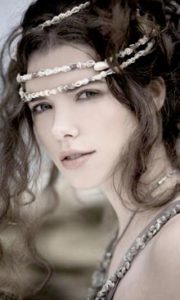
By simply turning a model to the side you can diminish the
apparent size of the body. Furthermore, if the model leans forward slighting this can create the illusion of a long and slender neck (very desirable for beauty images). This image was taken on a overcast day in California, with a reflector board just below the models chest
(to fill light into the shadows).
Technical: Canon 5D, Canon 85mm lens, f/1.8 at 1/3200,
Iso 100
If you find that you and your models share a common taste in music, you may want to play background music to create a more free-flowing atmosphere that’s conducive to posing. However, don’t impose music that only you like, because if your models are annoyed, they won’t perform as well. If you’re certain you want to fill the silence with music, but you don’t know what style to choose, settle on unobtrusive ambient music.
Know the Limits of Your Models
Find out before the shoot the types of photography and modeling that make your subject comfortable. If you’re doing a nude shot or something that might be considered risqué, ask the model beforehand if this is acceptable. Don’t assume lingerie or revealing clothing is okay for a model just because he or she won’t be nude. Ask first.
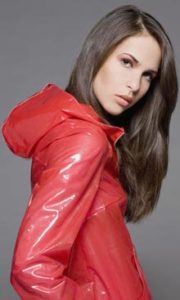
Turning a model to the side shrinks the apparent body size
of the model . The line created by the arm is continued
compositionally with the tilt of the head forward. This simple pose creates strong lines and attractive shapes. This image was taken in
the studio with a single beauty dish studio light.
Technical: Canon 5D, Canon 85mm lens, f/13 at 1/100,
Iso 100
Maintain Momentum
Copyright © Lindsay Adler
Good fashion and beauty shoots have a good forward movement to them. In general, you want to avoid breaking up the flow of the shoot. If you have to stop, make sure you’re talking to the model all the while, so you can keep up the overall momentum.
Even though you may be excited about an image or want to check your progress, don’t chimp (look at the back of the camera) too much. Many models have told me that the clicking of the camera is GREAT reassurance for a model. When they hear the clicking, they know they’re doing something right. If there’s silence (when you’re sorting through your images), they suspect something’s wrong. It’s okay to see if you’re getting what you want, but don’t stop or flip through all your images. Take quick glances.
Make the Poses Work for You
Posing in fashion is an art, not a science, and there are no rules or special guidelines. In fashion photography, poses can be expressive, but they can also be straightforward. When I do a fashion shoot, I often keep my poses extremely simple, unless I’m trying to accentuate a certain part of the clothing or if my image concept is based around a particular pose. In fact, many fashion photographers prefer strong, simple, and stoic poses in their images.
Fashion magazines are a great place to look for inspiration in posing. Start by looking for basic poses that look pleasing and might fit your concept. If you find a more complicated pose, feel free to bring the magazine page to the shoot. However, don’t begin the shoot with the more complicated pose. First, work with your model until you feel you have a strong basic shot, and then introduce the magazine image for inspiration. Don’t try to copy the pose exactly. You can seldom get it quite right. Instead, use it as a jumping off point for your creativity.
Direct Your Models
When working with models, you’ll need to direct them in various ways. Be as specific as possible with your requests. Instead of saying, “Move your head,” say “Move your chin two inches to the right.” I frequently use hand gestures to suggest the direction of movement or an axis of rotation. I also frequently find myself posing for the model if he can’t grasp the pose from my description. I do the pose, he imitates, and then I direct the final adjustments.
Try to limit yourself to words and gestures to communicate your wishes. If you need to touch a model to direct her and get her in the right place, first ask if you may touch her. You want your models to feel comfortable. They always say yes, but asking first lets them know you respect their boundaries.
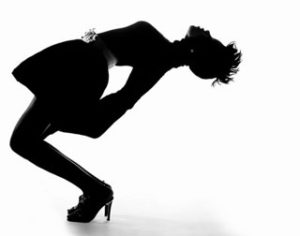
Image Copyright © Lindsay Adler
When I first got this model into the studio, I was very intrigued by her profile, especially her hair. I began by shooting her standing sideways and doing a silhouette so I could accentuate the
shape of her dress, her hair and her striking profile. After I got an image I was happy with, I played a game with her, having her strike a different pose with each click of the shutter. At one point she did a pose where she leaned really far back, and I could immediately recognize the great lines and shapes that were being created. Using this leaning pose as a starting point, we pushed it to the extreme to come up with this image.
Technical: Canon 5d, Canon 50mm lens, f/2.8 at 1/100
If you’re working with a model and you want to try something different, you might have the model “strike a pose” on his own. Don’t tell him, “Okay, now pose.” Instead, you might play a game in which you tell the model to strike a different pose for every different shot you take. If he creates a great pose, you can tell him to hold still and work with that pose until you get a great image. Asking for input from the model enhances a positive, cooperative atmosphere and also helps you create more unique poses.
Do Your Paperwork
Never forget to collect your model release. This contract will give you permission to use the images from your shoot in the future (whether for competitions, portfolios, or even to sell the images). There are hundreds of free model releases available online, and professional photographic societies’ websites (like ASMP) frequently feature the most valid contracts.
Finally, remember to always have fun at your shoots. If you’re having fun and you allow the model to see that you are, she is more likely to have fun too!
by Lindsay Adler

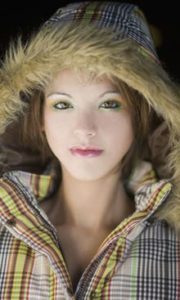

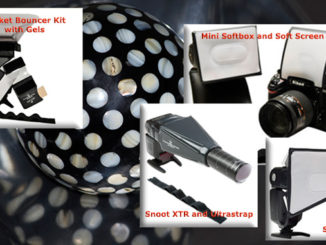
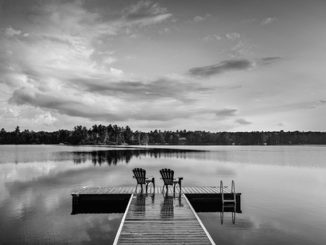
Leave a Reply